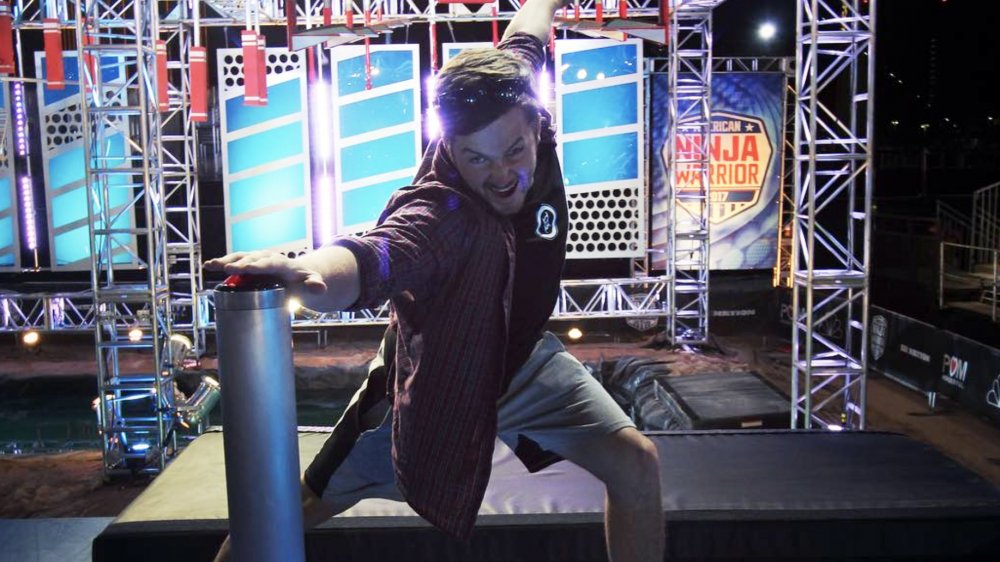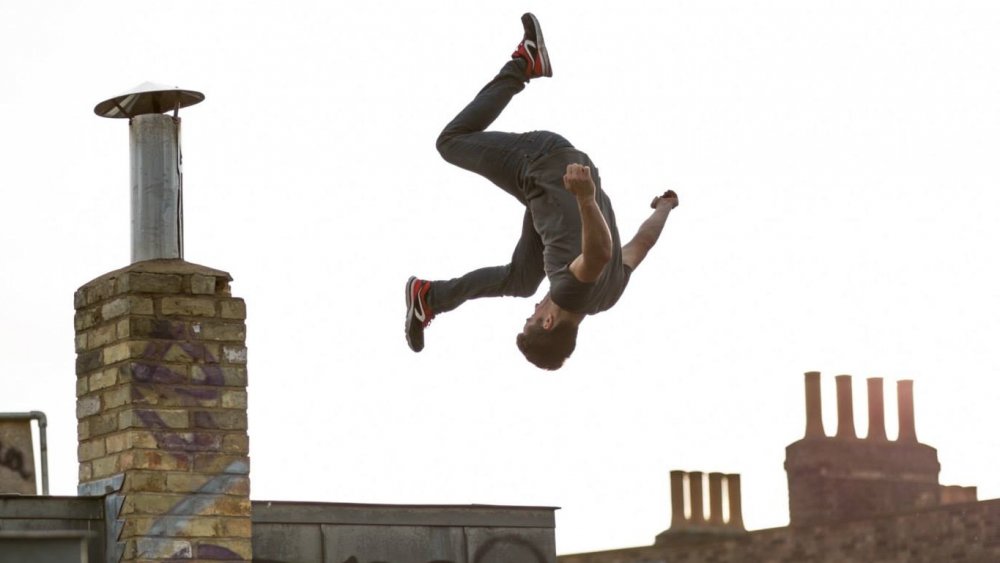What It's Really Like To Be A Course Tester For Ninja Warrior - Exclusive
Anyone who has ever watched American Ninja Warrior knows how addictive it can be. There's something thrilling about seeing real-life super-humans tackle an impossible-looking obstacle course to varying degrees of success. There's also some tenseness involved, similar to worrying that a figure skater will fall when watching them perform spins, jumps, and acrobatic tricks on ice. That dynamic makes American Ninja Warrior must-watch TV.
The Ninja Warrior franchise, which originated in Japan with the series entitled Sasuke, reaches farther than just America. It's taken its sense of adventure all around the world, from the United Kingdom and France to Switzerland and Germany to Egypt and Australia. All those different courses need to be tested before competitors can take them on — and one person whose job is to do exactly that is Shane Griffin, a parkour athlete, stuntman, and actor known for scaling buildings and contributing to stunts and body-double work in films like Doctor Strange and Mission: Impossible – Fallout. Eagle-eyed viewers may even spot Griffin in movies such as Bohemian Rhapsody and Ready Player One, and on TV shows like The Crown and Black Mirror.
Griffin is a Ninja Warrior course tester, which means he runs through all the obstacles to make sure they're safe and can actually be completed. It's a job that not only takes physical excellence to do well, but also requires a certain amount of psychological stamina — fear isn't an option when you're doing death-defying stunts.
In an exclusive interview with Looper, Griffin opened up about what it's really like to be a course tester for Ninja Warrior.
"My belief in my ability outweighs fear," he says. "But part of being a human being is experiencing fear, so I tend not to do things that scare me. With fear comes adrenaline, which causes you to shake, and that's not what you need when you need to stay calm and focused."
Griffin adds, "I always know I can do something because I have all this preparation beforehand — running, climbing, bouldering, parkour training. All that prep I do every week, along with nutrition, and all my years of training makes the belief in myself outweigh any fear."
Being a real-life Ninja Warrior is like being an Avenger, but even heroes fall sometimes
In addition to testing for safety and difficulty levels, Griffin also demonstrates how to do each obstacle for contestants, among other things.
"Every obstacle needs to be doable," he notes. "And while contestants aren't allowed to touch the obstacles [before their run], they can see me and some others complete them. In some countries, like the U.K. and Switzerland, I have to dress up as a ninja. So I'm completely in black and run the entire course every night in front of a crowd of thousands, which is pretty unique. In America, I do a bit more rigging, helping actually install the obstacles. And there's a lot of brainstorming that needs to be done. Everyone on the team is multi-functional and multi-talented. We're like the Avengers, because everyone's got their own special talent."
Despite doing this all over the world, Griffin admits that the American version of the show is toughest, and sometimes falls happen, even when you're a professional.
"I did my first testing for the U.K. and Egypt and then I went to America, where the obstacles are at such a higher level," he says. "So I fell a bit in my first year on American Ninja Warrior, and I still get surprised by an obstacle and fall sometimes. But every time I fall, I learn from it. Like if you fall on a massive swing because your grip goes, you know you need to work on your grip strength. Falling kind of shows you what you need to work on, so I'm getting better every season. But I do take falls quite seriously because there's not much room for error when I go outside and climb a five-story building."
And how does one fall — no pun intended — into such a profession? For Griffin, it all started when he'd jump out of windows a kid.
"I remember jumping out into a bush from my mom's two-story house," he recalls. "I jumped into a bush and then suddenly, at 30, I'm on set as a professional, and it all started with that jump and that sense of adventure. It's like a mature version of playing around as a child. It feels so normal to me, but I try and put myself in other people's shoes and I know it seems like a crazy thing to do."

